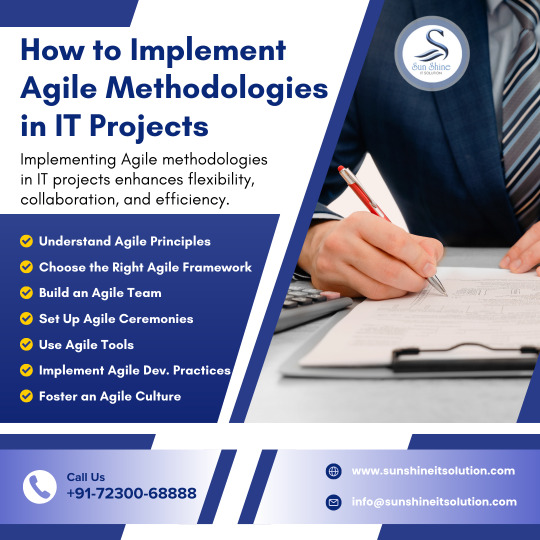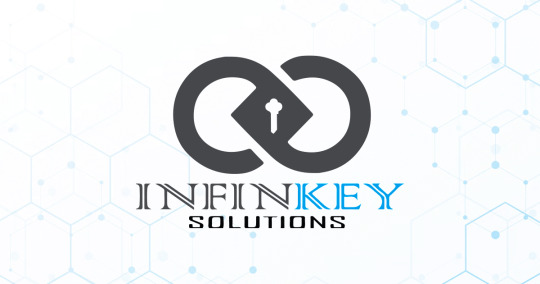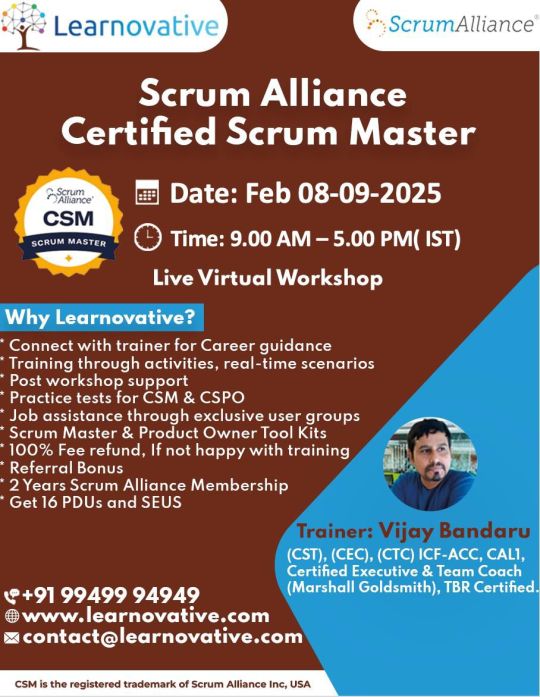#agilemethodology
Explore tagged Tumblr posts
Text
Increase ROI by implementing Vabro

Implementing Vabro can indeed increase ROI (Return on Investment) in various ways:
Improved Productivity: Vabro facilitate better task management, progress tracking, and collaboration among team members. With clear visibility into tasks, deadlines, and responsibilities, teams can work more efficiently, completing projects faster and delivering value sooner, thereby increasing ROI.
Enhanced Communication: Vabro often include features such as real-time messaging, file sharing, and commenting, which streamline communication within teams. Clear and effective communication reduces misunderstandings, prevents delays, and fosters collaboration, ultimately leading to higher productivity and ROI.
Better Resource Allocation: Vabro provide insights into team capacity, workload distribution, and project timelines. With this information, project managers can allocate resources more effectively, ensuring that the right people are working on the right tasks at the right time. Optimal resource allocation minimizes idle time and maximizes productivity, ultimately increasing ROI.
Faster Time-to-Market: Vabro helps team plan and execute these iterations efficiently, allowing them to deliver new features or updates to market faster. By reducing time-to-market, businesses can gain a competitive edge, capture market opportunities sooner, and generate revenue earlier, thereby increasing ROI.
Continuous Improvement: Vabro support the principles of continuous improvement and adaptation. They provide mechanisms for collecting feedback, reviewing performance metrics, and identifying areas for enhancement. By embracing feedback and making iterative improvements to processes and products, teams can deliver greater value to customers, leading to higher satisfaction and increased ROI.
Risk Reduction: Vabro enable better risk management through early detection of issues, transparent reporting, and adaptability to changing circumstances. By identifying and addressing risks promptly, teams can minimize project delays, cost overruns, and quality issues, ultimately protecting investments and increasing ROI stability.
In summary, implementing Vabro can increase ROI by improving productivity, enhancing communication, optimizing resource allocation, accelerating time-to-market, fostering continuous improvement, reducing risks, and increasing transparency across projects.
🔗 Visit www.vabro.com to know more.
#ScrumTools#AgileSoftware#ProjectManagement#TeamCollaboration#ProductivityTools#AgileDevelopment#SprintPlanning#KanbanBoards#TaskManagement#AgileTools#AgileTeams#ScrumMaster#UserStories#BacklogManagement#AgileMethodology#TeamCommunication#ProductBacklog#DailyStandup#AgileWorkflow#ReleasePlanning
2 notes
·
View notes
Text

ICYMI: Embedding Continuous Improvement into Consulting for Scalable Efficiency and Quality Gains https://kamyarshah.com/embedding-continuous-improvement-into-consulting-for-scalable-efficiency-and-quality-gains/
0 notes
Text
Kanban has become a cornerstone in project management and workflow optimization. One of the most effective ways to implement Kanban is through a Kanban whiteboard. Whether you are using a physical board or a digital solution, mastering the Kanban system can dramatically enhance productivity and efficiency in various industries.
In this blog, we will dive deep into the Kanban board, its applications, benefits, tools like the Jira Kanban dashboard, and advanced methodologies like lean Kanban, continuous integration Kanban, and scaled agile Kanban. We will also explore tools such as the best Kanban software, Kanban certification, and Kanban estimation techniques.
#KanbanWhiteboard#KanbanBoard#JiraKanbanDashboard#KanbanMetrics#KanbanCertification#LeanKanban#ProjectManagement#WorkflowOptimization#AgileMethodology#SafeKanban#ScaledAgileFramework#PortfolioKanban#ContinuousIntegration#TaskManagement#KanbanSoftware
0 notes
Text
#IterativeDevelopment#AgileDevelopment#SoftwareLifecycle#ProductDevelopment#TechInnovation#DevProcess#SoftwareEngineering#AgileMethodology#SoftwareProjectManagement#CustomSoftwareDevelopment
0 notes
Text
Agile Software Development: Principles, Patterns, and Practices" by Robert C. Martin is a foundational book that explores the key principles of Agile development, software design patterns, and best practices for writing clean, maintainable code. The book provides insights into how Agile methodologies enhance software development processes, enabling developers to create flexible, scalable, and high-quality software systems.
#Agile#SoftwareDevelopment#RobertCMartin#CleanCode#DesignPatterns#AgilePrinciples#SoftwareEngineering#AgileDevelopment#DevOps#SoftwareDesign#ProgrammingBestPractices#DevelopmentMethodologies#AgilePractices#SoftwareCraftsmanship#TestDrivenDevelopment#TDD#Refactoring#SoftwareArchitecture#CodingBestPractices#TechBooks#ContinuousImprovement#DevelopmentCulture#CodingSkills#AgileMethodology#ProgrammingBooks#SoftwareQuality
0 notes
Text

🚀 How to Implement Agile Methodologies in IT Projects 💡
In today’s fast-evolving tech landscape, flexibility and speed are game-changers. That’s where Agile Methodology comes in — helping IT teams deliver faster, smarter, and better results. ✅
Here’s a quick guide to implementing Agile in your next project:
🔹 1️⃣ Define Your Agile Framework: ▫️ Scrum, Kanban, or Lean — choose the one that fits your team’s workflow best.
🔹 2️⃣ Build Cross-Functional Teams: ▫️ Developers, testers, designers, and product owners working collaboratively.
🔹 3️⃣ Break Projects into Sprints:
▫️ Tackle work in smaller, manageable tasks (2-4 weeks).
Regular sprint reviews ensure continuous improvement.
🔹 4️⃣ Daily Stand-Ups: ▫️ Quick, focused meetings to track progress, address blockers, and realign priorities.
🔹 5️⃣ Prioritize Backlogs: ▫️ Keep tasks aligned with business goals and customer needs.
🔹 6️⃣ Emphasize Continuous Feedback: ▫️ Regular client input ensures the end product hits the mark.
🔹 7️⃣ Reflect & Improve: ▫️ After each sprint, hold a retrospective to refine processes.
Please explore our YouTube channel for informative videos. Link :- https://www.youtube.com/@sunshineitsolutions
Visit our blog for informative business ideas https://www.blog.sunshiene.com/
Contact Us :- https://wa.me/+91-7230068888
WhatsApp Channel ( Subscribe for more updates ) https://whatsapp.com/channel/0029Vb0QMGg0bIdggODhE22T
0 notes
Text
Agile + Business Analysis = Project Superpowers 💪
In this discussion, we will explore the intersection of business analysis and Agile methodologies, focusing on how they complement each other to improve project outcomes.

Business analysis plays a crucial role in identifying business needs and proposing solutions, while Agile methodologies emphasize flexibility, collaboration, and iterative development. Together, they help organizations adapt to changing requirements and deliver value incrementally.
What is Business Analysis:
Business analysis is the practice of identifying business needs and recommending solutions that add value to stakeholders. It involves understanding an organization's structure and policies, facilitating change, and proposing improvements. The solutions derived from business analysis can include software implementations, process enhancements, or organizational changes, all aimed at helping businesses achieve their strategic goals.
What is Agile Methodology:
Agile methodology is a flexible project management approach primarily used in software development that breaks projects into manageable phases, focusing on continuous collaboration and improvement. It follows an iterative process of planning, execution, and evaluation. Agile emphasizes individuals and interactions, working software, customer collaboration, and adaptability. This methodology encourages the incremental delivery of project components, allowing teams to respond to change effectively while maintaining close engagement with customers and stakeholders.
Agile Business Analysis:
Agile business analysis is the practice of applying traditional business analysis techniques within an Agile environment. The focus here is on maximizing the business value of solutions through continuous inspection and adaptation, aligning closely with Agile principles. This approach emphasizes collaboration with stakeholders, flexibility in responding to change, and delivering incremental value. Agile business analysis ensures that business needs are effectively addressed throughout the project lifecycle, with a strong emphasis on adaptability and continuous improvement in processes and solutions.
Agile Business Analyst:
An Agile Business Analyst is a professional who applies Agile principles and practices to the business analysis process, concentrating on delivering maximum business value through effective collaboration and communication.
Thinking about Agile Business Analysis for your projects? 🤔 Get all the details and more expert advice on Infinkey Solutions

#businessanalysis#agilemethodology#agilebusinessanalysis#infinkey#projectmanagement#softwaredevelopment#businessanalyst#careeradvice
0 notes
Text
12 Types of Agile Methodologies – Part 1.
12 Tipos de Metodologías Ágiles – Parte 1.
👉 https://blog.nubecolectiva.com/12-tipos-de-metodologias-agiles-parte-1/

#programming#coding#desarrollo web#devs#software development#metodologíaságiles#agilemethodology#agile methodologies
0 notes
Text
Leading CodeIgniter Development Companies in India for Agile Web Development.
WebWorx is a leading CodeIgniter development company in India, specializing in agile development methodologies to deliver high-quality, cost-effective web solutions. Our expert team leverages the power of CodeIgniter to create robust and scalable applications that meet your business needs. Contact WebWorx today for a free consultation and experience the benefits of agile CodeIgniter development.
#CodeIgniterDevelopmentIndia#AgileWebDevelopment#CodeIgniterDevelopment#WebDevelopmentIndia#AgileMethodology
0 notes
Text
🔍 Quiz Time with Vabro! 🧩

Ready to test your Scrum knowledge??
Here's a fun one for you!
🏆Drop your answers below and let's see who’s the ultimate Scrum Master! 🏆
Visit www.vabro.com to know more.
#VabroQuiz#ScrumMaster#AgileMindset#ProductBacklog#FunWithScrum#QuizTime#AgileMethodology#TeamCollaboration#ScrumLife#ProjectManagementFun
2 notes
·
View notes
Text

Embedding Continuous Improvement into Consulting for Scalable Efficiency and Quality Gains https://kamyarshah.com/embedding-continuous-improvement-into-consulting-for-scalable-efficiency-and-quality-gains/
0 notes
Text
In Agile development, one of the most important metrics for measuring team performance and estimating work is velocity. Agile velocity is a key indicator of how much work a team can complete within a sprint, helping teams plan better and continuously improve their efficiency.
But what is velocity in Agile exactly? How is it calculated, tracked, and used for better project planning?
In this blog, we will explore the Agile velocity definition, velocity tracking in Agile, and best practices for leveraging this metric effectively.
#AgileVelocity#VelocityInAgile#AgileVelocityDefinition#VelocityInAgileDevelopment#VelocityTrackingAgile#AgileVelocityTracking#WhatIsVelocityInAgile#VelocityAgileCalculation#VelocityAgile#DefinitionOfVelocityInAgile#AgileMethodology#VelocityChartInAgile#SprintPlanning#AgileMetrics#AgileDevelopment
0 notes
Text

🚀 Boost Your Career with Agile Scrum Foundation Certification Training! 🚀
Are you a software developer, project manager, or IT professional looking to enhance your skills in Agile project management and Scrum frameworks? Upgrade My Skill's Agile Scrum Foundation Certification Training is your perfect gateway to understanding Agile principles and Scrum practices.
📚 What You'll Learn:
Key concepts of Agile methodologies. Scrum roles, events, and artifacts. Agile planning, estimating, and continuous improvement techniques. Practical applications of Agile tools and best practices. This entry-level course is designed to prepare you for the Agile Scrum Foundation (ASF) Certification Exam. Delivered in both classroom and live online modes, it's accessible to professionals worldwide.
✅ Why Get Certified?
Increase Career Opportunities: Stand out with a globally recognized credential. Boost Earning Potential: Agile expertise is in high demand across industries. Lead Successful Projects: Master the tools and techniques to drive iterative progress and enhance team performance. Get ready to elevate your career and become an Agile expert with Upgrade My Skill!
👉 Enroll Now: https://www.upgrademyskill.com/agile-scrum-foundation-certification-training
#AgileScrum#ScrumCertification#ProjectManagement#UpgradeYourSkills#AgileTraining#careerdevelopment#AgileMethodology#ScrumMaster#AgileProjectManagement#AgileCertified#ScrumTraining#ProfessionalDevelopment#AgileCertification#ProjectManagementTraining#AgileScrumFoundation#ScrumPractices#ITProfessionals#SoftwareDevelopment#AgileCoaching#ScrumMasterCertification#AgileTeams#ContinuousImprovement#CareerGrowth#ITTraining#AgileSkills#AgileProcess#ScrumRoles#UpgradeMySkill#CertificationTraining#AgileExperts
0 notes
Text

0 notes
Text
🚀 Certified Scrum Master (CSM) Certification Training by Best Trainer Vijay Bandaru! 🚀
Are you ready to accelerate your career in Agile and Scrum? Join Best Trainer Vijay Bandaru for an exclusive CSM Certification Training and gain in-depth knowledge of Scrum frameworks, Agile principles, and real-world implementation. Don’t miss this opportunity to boost your career!
🔥 New Weekend Batch Starting: 08-09 February 2025 📍 Mode: Online & Classroom Training ⏰ Timings: 09:00 AM - 05:00 PM 📞 Call Us: +91 9848032144 🌐 Visit: www.vijaybandaru.com/portfolio/

#ScrumMasterTraining#CSMTraining#AgileCoach#ScrumMaster#AgileMethodology#ScrumCertification#ScrumMasterCertified#AgileTransformation#VijayBandaru#BestTrainerVijayBandaru#ScrumMasterTrainingInHyderabad
0 notes
Text
Revolutionizing Software Development: Understanding the Phases, Lifecycle, and Tools of DevOps
DevOps refers to the combinations of Development and Operational Skills. Basically, to overcome the long, time-consuming process of traditional waterfall models, DevOps are preferred. Nowadays many companies are interested to employ engineers who are skilled at DevOps.It integrates development and operations i.e. it takes a combination of software developers and IT sector.

Phases of DevOps
DevOps engineering consists of three phases:
Automated testing
Integration
Delivery
DevOps lifecycle
DevOps mainly focuses on planning, coding, building and testing as the development part. Added is the operational part that includes releasing, deployment, operation, and monitoring. The development and operational part make up the life cycle.
DevOps team & work style
In business enterprises, DevOps engineers create and deliver software. The main aim of this team, in an enterprise environment, is to develop a quality product without the traditional time consumed.
DevOps employs an automated architecture which comes with a set of rules, a person who has worked as a front-runner for the organization, will lead the team based on the company’s beliefs and values.
A Senior DevOps engineer is expected the following skills
Software testing: The responsibility increases along with coding new requirements to test, deploy and monitor the entire process as well.
Experience assurance: The person follows the customer’s idea to develop the end product.
Security engineer: During the development phase the security engineering tools to be used in the security requirements.
On-time deployment: The engineer should ensure that the product is compatible and running at the client’s end.
Performance engineer: Ensures that the product functions properly.
Release engineer: The role of the release engineer is to address the management and coordination of the product from development through production. Release ensures the coordination, integration, flow of development, testing, and deployment to support continuous delivery and maintenance of the end-end applications.
System admin: Traditionally system admin focuses only on the server running. But DevOps handles the open source pros, passionate towards technology, and hands-on with development platforms and tools. They maintain the networks, servers database and even support.
Usage of the DevOps tools
The Git tool is a version control system tool used to develop the source code by developers and send it to the Git repository and we have to edit the code in the repository.
Jenkins is a powerful application tool that allows the code from the repository using the git plugin and builds it using tools like Ant or Maven.
Selenium is an open-source automation tool. The Selenium tool performs regression and functional testing. Selenium is used for testing the code from Jenkins.
Puppet is a configuration management and deploys testing environment.
Once the code is tested, Jenkins sends it for deployment on the production server.
Then the completion of Jenkins it goes to be monitored by tools Nagios.
After the monitoring process, Docker containers provide a testing environment to test the built features.
Basic technical knowledge for DevOps recruiters:
The DevOps recruiters should follow basic methodologies such as agile, continuous delivery, continuous integration, microservices, test-driven development, and infrastructure as a code.
They must know the basic scripting languages such as Bash, Python, Ruby, Perl, and Php.
The recruiters must know the infrastructure automation codes such as Puppet, chef, Ansible, Salt, Terraform, Cloud formation, and Source code management such as Git, Mercurial, and Subversion.
The developers should study cloud services such as AWS, Azure, Google Cloud, and open stack.
Another skill is orchestration. In programming, to manage the interconnections and interactions among the private and public clouds.
Next one is containers, a method of OS virtualization that allows you to run an application and its dependents in a resource-isolated process, it includes LXD, Docker.
The recruiters should be able to manage multiple projects, simultaneously.
They must know the usage of tools for continuous integration and delivery. Such as Cruise control, Jenkins, Bamboo, Travis CI, GOCD, Team Foundation server, Team City, Circle CI
Testing tools such as Test Complete, Testing Whiz, Serverspec, Testinfra, In Spec, Customer Driven Contracts. Recruiters must know the monitoring tools such as Prometheus, Nagios, Icinga, Zabbix, Splunk, ELK Stack, collected, CloudWatch, Open Zipkin.
In conclusion, DevOps combines development and operational skills to streamline the software development process, with a focus on planning, coding, building, testing, releasing, deploying, operating, and monitoring. The DevOps team is responsible for creating and delivering quality products in an enterprise environment using automated architecture and a set of tools such as Git, Jenkins, Selenium, Puppet, Nagios, and Docker. DevOps recruiters should have basic technical knowledge of agile, continuous delivery, scripting languages, infrastructure automation, cloud services, orchestration, containers, and project management, as well as proficiency in various tools for continuous integration and delivery, testing, and monitoring.
#DevOps#SoftwareDevelopment#Automation#ContinuousIntegration#ContinuousDelivery#DevOpsTools#AgileMethodology#Docker#Jenkins#Git#Selenium#Puppet#Nagios
0 notes